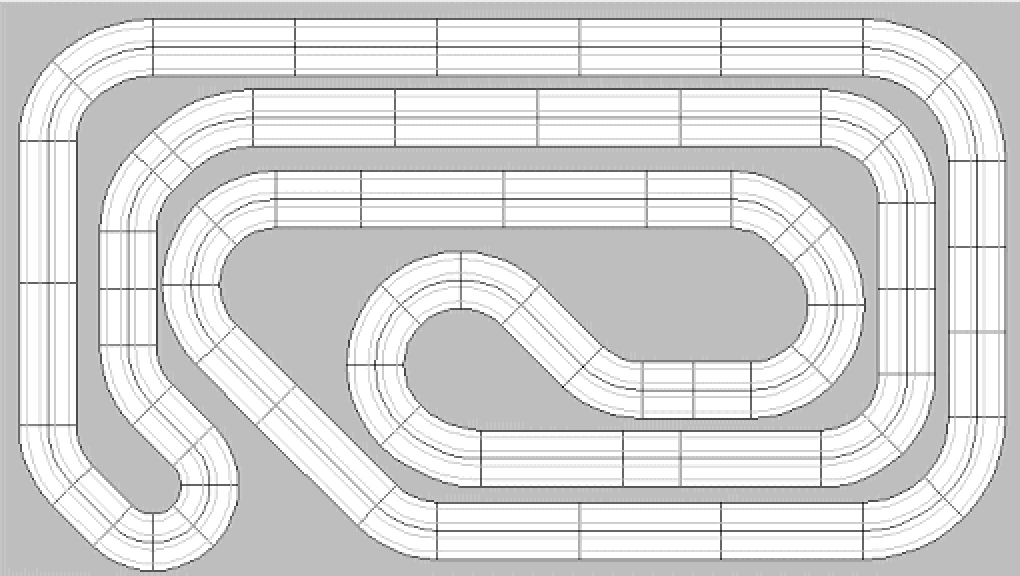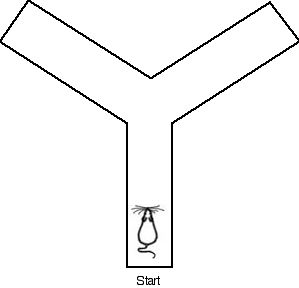

| Contents [0/14] |
| Linearity [1/14] |
| Backtracking [2/14] |
| Stacks and Recursion [3/14] |
| Example program [4/14] |
| While loop version [5/14] |
| Converting a while loop to a recursive function [6/14] |
| Recursive version (forward) [7/14] |
| General Recursion [8/14] |
| Recursive version (backward) [9/14] |
| Backwards and forwards [10/14] |
| Pure recursive functions [11/14] |
| Reading pure recursive functions [12/14] |
| Rules for looping [13/14] |
| Rules for recursion [14/14] |
(Click here for one slide per page)
| Linearity [1/14] |
Linear vs. Non-Linear problems


Examples of Linear Problems
Examples of Non-Linear Problems
| Backtracking [2/14] |
Exploring Non-Linear structures may require backtracking.


Data Structures 2 emphasizes backtracking:
The major data structures we look at in Data Structures 1 don't typically use backtracking.
| Stacks and Recursion [3/14] |
Stacks are useful for backtracking
...in particular when working with trees and graphs!
Functions use a Call Stack
Recursive functions are more general than loops
We can translate any loop into a recursive function
| Example program [4/14] |
01 |
package ds1.student.recursion; import java.util.Arrays; import stdlib.*; public class Playground { /* Return number of times 5.0 occurs in the list */ public static int numFives (double[] list) { return StdRandom.uniform (100); //TODO: fix this } /* This is a test function */ public static void testNumFives (int expected, double[] list) { int actual = numFives (list); if (expected != actual) { StdOut.format ("Failed: Expecting [%d] Actual [%d] with argument %s\n", expected, actual, Arrays.toString (list)); } } /* A main function for testing */ public static void main (String[] args) { testNumFives (0, new double[] { }); testNumFives (1, new double[] { 5 }); testNumFives (0, new double[] { 11 }); testNumFives (3, new double[] { 5, 5, 5 }); testNumFives (0, new double[] { 11, 21, 31, 41 }); testNumFives (1, new double[] { 5, 11, 21, 31, 41 }); testNumFives (1, new double[] { 11, 21, 31, 41, 5 }); testNumFives (1, new double[] { 11, 21, 5, 31, 41 }); testNumFives (3, new double[] { 11, 21, 5, 31, 5, 41, 5}); StdOut.println ("Finished tests"); } /* A main function for debugging -- change the name to "main" to run it */ public static void main2 (String[] args) { double[] list = new double[] { 5, 11, 5, 5 }; double result = numFives (list); StdOut.println ("result: " + result); } } |
| While loop version [5/14] |
Code:
For // list==[5,11,5,5], i==0, result==0 // list==[5,11,5,5], i==1, result==1 // list==[5,11,5,5], i==2, result==1 // list==[5,11,5,5], i==3, result==2 // list==[5,11,5,5], i==4, result==3 More abstractly: // list[i..]==[5,11,5,5], result==0 // list[i..]==[11,5,5], result==1 // list[i..]==[5,5], result==1 // list[i..]==[5], result==2 // list[i..]==[], result==3 This is a while loop. |
| Converting a while loop to a recursive function [6/14] |
while loop to an if block.
| Recursive version (forward) [7/14] |
Replacing a while loop with a recursive function call:
For // list[i..]==[5,11,5,5], result==0 // list[i..]==[11,5,5], result==1 // list[i..]==[5,5], result==1 // list[i..]==[5], result==2 // list[i..]==[], result==3 The call/return pattern is: // call@3 ([5,11,5,5], 0) // call@4 ([11,5,5], 1) // call@5 ([5,5], 1) // call@6 ([5], 2) // call@7 ([], 3) // retn@7 ([], 3) : 3 // retn@6 ([5], 2) : 3 // retn@5 ([5,5], 1) : 3 // retn@4 ([11,5,5], 1) : 3 // retn@3 ([5,11,5,5], 0) : 3
(Abbreviating Converted to a recursive function. Note that we do not mutate i in the helper! Note that computation goes forward. We forget the old values of i as we go forward. This kind of recursion is called tail recursion: the recursive call is the last thing the function does before it returns. There's no work to do after the recursive call returns. There is a one-to-one correspondence between loops and tail-recursive functions. We can mechanically convert between these to forms. Compilers do it all the time. In the language I work in, Scala, the compiler can be instructed to expect to be able to do tail-call elimination. |
| General Recursion [8/14] |
Recursive functions are more general than looping!
What's the difference?
With forward recursion:
With backward recursion:
| Recursive version (backward) [9/14] |
Recursion is more general than looping!
For // list[i..]==[], result==0 // list[i..]==[5], result==1 // list[i..]==[5,5], result==2 // list[i..]==[11,5,5], result==2 // list[i..]==[5,11,5,5], result==3 The call/return pattern is: // call@3 ([5,11,5,5]) // call@4 ([11,5,5]) // call@5 ([5,5]) // call@6 ([5]) // call@7 ([]) // retn@7 ([]) : 0 // retn@6 ([5]) : 1 // retn@5 ([5,5]) : 2 // retn@4 ([11,5,5]) : 2 // retn@3 ([5,11,5,5]) : 3 The immediate recursive call here is often referred to as the leap of faith. You're assuming you can solve the problem for the rest of the list. |
| Backwards and forwards [10/14] |
It is common for recursive functions to do work both forwards and backwards.
Try going through this example yourself.
For
call@3 (5, [11,21,31,5,41])
call@4 (5, [21,31,5,41])
call@5 (5, [31,5,41])
call@6 (5, [5,41])
ret@6 (5, [5,41]) : 0
ret@5 (5, [31,5,41]) : 31
ret@4 (5, [21,31,5,41]) : 52
ret@3 (5, [11,21,31,5,41]) : 63
|
Here is the complete starter code for this example:
01 |
package ds1.student.recursion; import java.util.Arrays; import stdlib.*; public class Playground { /* Return the sum of the values in the list up to, but no including the first 5.0 */ public static double sumUntil (double val, double[] list) { return StdRandom.uniform (); //TODO: fix this } /* This is a test function */ public static void testSumUntil (double expected, double val, double[] list) { double actual = sumUntil (val, list); if (expected != actual) { StdOut.format ("Failed: Expecting [%f] Actual [%f] with argument (%f, %s)\n", expected, actual, val, Arrays.toString (list)); } } /* A main function for testing */ public static void main (String[] args) { for (double v : new double[] { 5, 7 }) { testSumUntil (63, v, new double[] { 11, 21, 31, v, 41 }); testSumUntil (0, v, new double[] { v, 11, 21, 31, 41 }); testSumUntil (104, v, new double[] { 11, 21, 31, 41, v }); testSumUntil (11, v, new double[] { 11, v, 21, v, 31, 41 }); testSumUntil (0, v, new double[] { v }); testSumUntil (0, v, new double[] { v, v }); testSumUntil (104, v, new double[] { 11, 21, 31, 41 }); testSumUntil (11, v, new double[] { 11 }); testSumUntil (0, v, new double[] {}); } StdOut.println ("Finished tests"); } /* A main function for debugging -- change the name to "main" to run it */ public static void main2 (String[] args) { double[] list = new double[] { 11, 21, 31, 5, 41 }; double result = sumUntil (5, list); StdOut.println ("result: " + result); } } |
| Pure recursive functions [11/14] |
Pure functions are like functions in math: they always do the same thing.
No side effects:
A function is pure
if it does not change any non-local
variables, read files or network connections, or make any output.
To understand the execution of a pure recursive function, it is easiest to start at the base case and work your way up.
What does this function do?
01 |
public static int f (int n) { if (n <= 0) return 1; int nMinus1 = f (n-1); return n * nMinus1; } |
Bottom up (from the base case):
Building up a table
Memoizing
f(0) = 1 f(1) = 1 * f(0) = 1 f(2) = 2 * f(1) = 2 f(3) = 3 * f(2) = 6 f(4) = 4 * f(3) = 24 f(5) = 5 * f(4) = 120
Top down (from the initial argument):
f(3) = 3 * f(2)
= 3 * (2 * f(1))
= 3 * (2 * (1 * f(0)))
= 3 * (2 * (1 * 1))
It can be easier to think about this from the bottom up. Imagine trying this for f(5) or f(17).
Which is easier to reason about?
| Reading pure recursive functions [12/14] |
Another example:
01 |
public static int g (int n) { if (n <= 1) return n; int nMinus1 = g (n-1); int nMinus2 = g (n-2); return nMinus1 + nMinus2; } |
Bottom up (from the base case):
Building up a table
Memoizing
g(0) = 0 g(1) = 1 g(2) = g(0) + g(1) = 0 + 1 = 1 g(3) = g(1) + g(2) = 1 + 1 = 2 g(4) = g(2) + g(3) = 1 + 2 = 3 g(5) = g(3) + g(4) = 2 + 3 = 5 g(6) = g(4) + g(5) = 3 + 5 = 8 g(7) = g(5) + g(6) = 5 + 8 = 13 g(8) = g(6) + g(7) = 8 + 13 = 21 g(9) = g(7) + g(8) = 13 + 21 = 34
Top down (from the initial argument):
g(5) = g(3) + g(4)
= (g(2) + g(1)) + g(4)
= ((g(0) + g(1)) + g(1)) + g(4)
= ((0 + 1 ) + 1 ) + g(4)
= 2 + g(4)
= 2 + g(3) + g(2)
= 2 + (g(2) + g(1)) + g(2)
= 2 + ((g(0) + g(1)) + g(1)) + g(2)
= 2 + ((0 + 1 ) + 1 ) + g(2)
= 2 + 2 + g(2)
= 2 + 2 + (g(0) + g(1))
= 2 + 2 + (0 + 1 )
= 2 + 2 + 1
= 5
You can view this as a call tree:
g(5)
+ g(4)
| + g(3)
| | + g(2)
| | | + g(1)
| | | + g(0)
| | + g(1)
| + g(2)
| + g(1)
| + g(0)
+ g(3)
+ g(2)
| + g(1)
| + g(0)
+ g(1)
g(5) calls g(4) and g(3).
g(4) calls g(3) and g(2).
| Rules for looping [13/14] |
There is an index (more generally, some metric)
i
Start somewhere valid
i = 0
Base case says when to stop
i >= a.length
Inductive case takes us closer to base case
i = i + 1
| Rules for recursion [14/14] |
There is an index (more generally, some metric)
i
Start somewhere valid
i = 0
Base case says when to stop
i >= a.length
Inductive case takes us closer to base case
i = i + 1
Inductive cases should not overlap!
Exponential explosion of work!